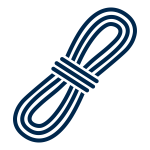Digital Discovery Process
The Digital Discovery Process℠ is a unique service built to help faculty and staff move early stage software based ideas from unstructured brainstorms, fragments and broad based inspiration into well formed and developed concepts. This powerful service helps move your ideas from a rough sketch to an articulate vision that can be clearly presented, supported and actioned.
How it Works
 Idea / Kick-Off
Idea / Kick-Off
- What is it?
- Who does it help?
- Where is it used?
- What is the core problem being addressed?
The inventor provides a brief description of the core idea, one page maximum. With this outline in hand, the Digital Discovery team helps unpack, identify and focus the core concept.
Once the foundation has been established, the inventor, in collaboration with the Digital Discovery Team, begins the first step at validation and understanding the proposition from the customer’s point of view. The inventor is provided a quick immersion, into the concept of Value Proposition Design as a means of establishing an understanding of customers core needs, challenges and opportunities.
 Customer Discovery
Customer Discovery
Utilizing the well established methodology described in the Business Model Canvas, the inventor and Digital Discovery Team work collaboratively to understand the value of the idea from the point of view of the potential customer. Through a series of focused interviews with potential customers, the team applies the Value Proposition Canvas to surface two key components to success; the Customer Profile and the Value Map. By understanding who your customer is, their pains and opportunities and linking these directly to your idea’s pain relievers and pain creation determines fit. The team completes a series of rapid interviews with key customer groups, listens, learns and captures these key insights. These interviews often lead to adjustments to the initial idea making it stronger and valuable, a first discovery. At the conclusion of this phase the team can clearly answer three important questions for any product or service.
- What problem are you trying to solve?
- Why does it matter?
- Who cares?
 Technical Footprint
Technical Footprint
With a firm foundation established, the team moves toward hardening the initial concept. Using a set of core software tools the idea moves from an initial “cocktail napkin” sketch into a more robust set of tools helping build the story. Core deliverables include a set of core use cases, a simple story telling technique that explains how a particular product may be used in practice. The use cases create a vision of the solution in practice helping build a story that is easily understood, and focused in telling how the solution solves a customer problem. Additionally, two sets of visualization tools are developed to help show the idea’s basic implementation concept. Using a set of simple drawings, known as wire-frames, the core screens and interactions can be presented. Taking this a step further, the team will develop an interactive simulation of the user experience known as a clickable comp which shows what the experience is like for a user. These three tools merge together helping to make the idea come to life and address the old adage that a picture is worth a 1,000 words.
In addition to the visualization aspect of the Technical Footprint, a detailed outline of technical recommendations is provided. These recommendations provide the basic outline of requirements regarding security, scalability, development environment “stack”, database and basic architecture. Alongside this technical footprint, a first stage regulatory and compliance assessment is done for medical applications. This assessment helps to establish initial thinking with respect to FDA, HIPPA and HiTech regulatory compliance requirements allowing the inventor to establish early in the process needed documentation and controls.
 Workbook Summary
Workbook Summary
The final step in the Discovery Process is the compilation of the previous elements into a single, unified document. This important asset is used to clearly and concisely explain your idea to collaborators, sponsors and technical development resources. The workbook is an organic document and is expected to be revised and extended as the ideas evolve and advance through further Customer Discovery, technical evaluation and design sessions. It is a foundation to be built upon, modified and adjusted as the core idea moves from inception to reality.
Health Specific Data Licensing
For health specific data licensing please contact Drew Bennet, Director of Software and Content Licensing.

